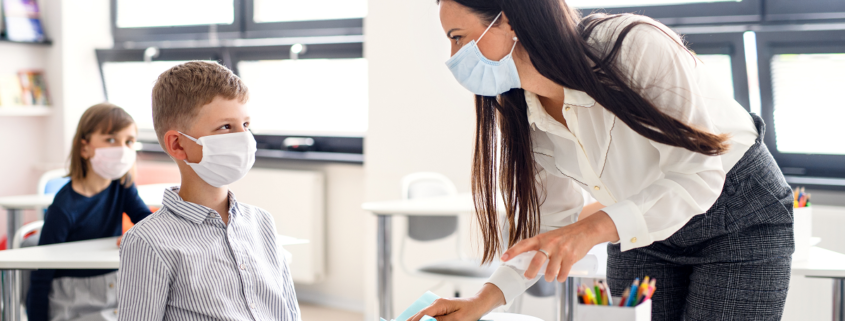Green Cleaning At School – Kellina Brennan
Because germs are invisible, we become quietly lulled into a false sense of security- a peace shattered with the worldwide COVID-19 pandemic. The return to schools and workplaces came with a trepidation measured in masks and air filters, cleaning wipes, and 6-foot distances. I can’t remember ever having been asked to clean my desk before, not to mention shared classroom items like lab equipment and printers. That’s not to say they weren’t cleaned, as our school has an incredible janitorial staff that works tirelessly to ensure we move from classrooms to the lunchroom to our athletic facilities in a safe and clean environment. But before COVID-19, we hadn’t been asked to clean and disinfect our desks and study spaces. What had never been a thought- things like cleaning study tables in the library before sitting down and again before leaving- was now a requirement. Our cleaning staff was phenomenal at their jobs, but even with additional staff members hired, our school, along with the world, seemed to need Herculean strength to battle the virus. Germs, always around us, became more of a threat. Thanks to directives from the CDC and our school board, our teachers instructed us to disinfect our desks before sitting down and again before we left the class. Disinfectant wipes, spray bottles, and paper towels were in every room and at stations in the halls. In our cafeteria, where we had once shared meals like family at long tables, we now sat at desks, separated by the required footage. Looking around, spray bottles of disinfectant were as standard as sandwiches. This scene was remarkable when viewed historically and simultaneously relatively unremarkable, identical to ones played out throughout schools everywhere.
This practice of schoolchildren taking ownership of cleaning their personal space represents a large-scale challenge of kids handling and utilizing cleaning products. Spraying cleaning fluids and wiping surfaces down became routine, almost robotic.
We find ourselves now in a time when cleaning staff is working endless hours to meet stringent deep cleaning requirements in schools and other public places. Gone are the days when students simply neaten their desks or make sure the lockers are not overflowing with books and papers. As communities, we are taking the task of cleaning into our own hands, a necessary boost to the existing cleaning policies that will work at risk reduction and keep students and staff healthy.
As President of our high school’s Science Club, I introduced discussions in our meetings about this increase in cleaning and chemicals in our school. We added to our calendar several sessions to make cleaning clothes. A paper towel roll, water, vinegar, and essential oil create a non-toxic and great smelling alternative. We sampled ideas and found baking soda to be is a cleaner’s dream. More importantly, we need to move this creative thinking from a club activity to advocacy within the school and district. As students, we need to raise awareness that we want and expect the school to be looking at the products they are using and switch to green alternatives when possible. Our club-made cleaning cloths are not a realistic solution for the plethora of deep cleaning needs schools have, but the county can be held accountable to purchase environmentally friendly cleaners.
As we move forward with our club, we will be working in tandem with the Environmental Club to look for ways to encourage green cleaning. Reducing our chemical usage within the school means responsible usage and minimizing wastefulness. For students, use only as much of a cleaner as you need and no more. Ensure that students, teachers, and all staff members are aware of what chemicals are in the cleaners they are using, and offer them a green alternative. Beyond the environmentally friendly cleaner made in our club meetings, the school must be using cleaning products from the classrooms to the kitchen aligned with the forward-thinking mindset of raising the next generation of leaders. This will take action and advocacy brought to the school board and district from students and staff. With purpose and concern for the future, students can bring about clean ideas that make a difference.
Learn More about Kellina Brennan here!



